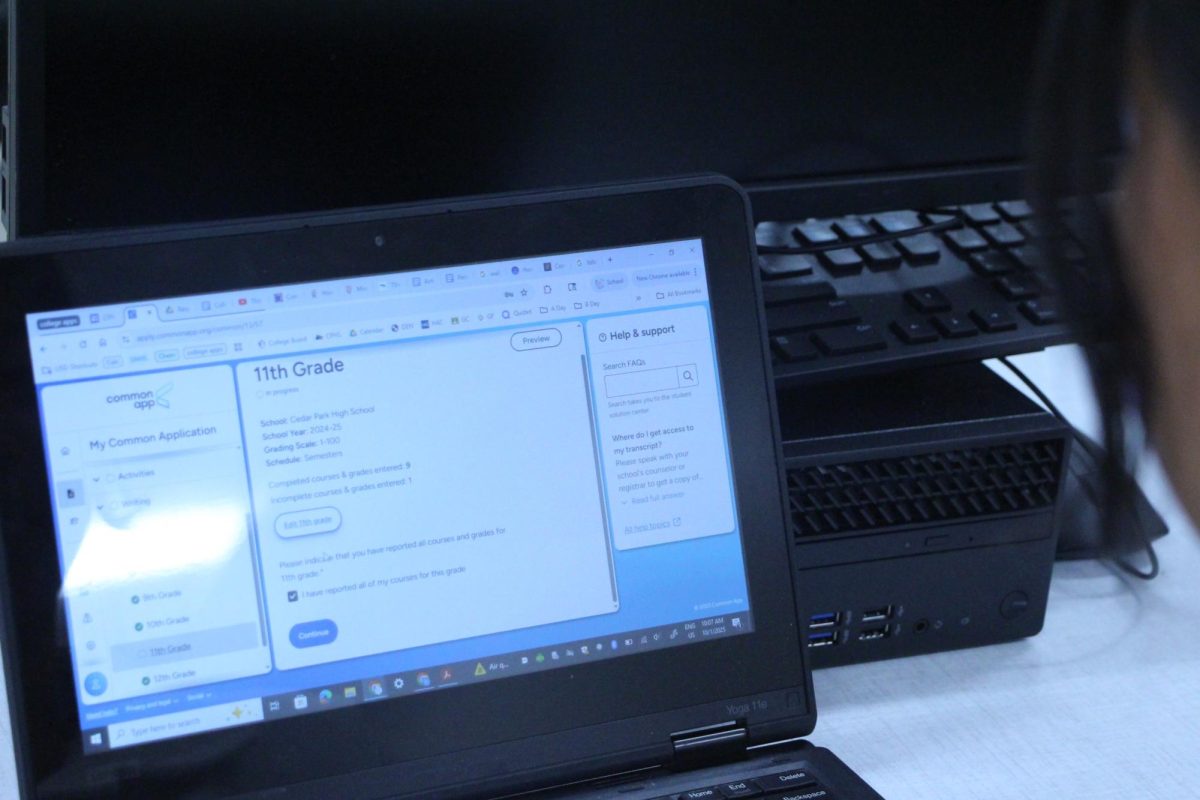While several upperclassmen have witnessed the spectacle that is the Latin Forum, the class that is Latin itself still remains a mystery to many. Located in the middle of other foreign language classrooms in the A building, few have ever entered the Latin classroom and returned unscathed- or at least uninterested.
The first step into the class is initial selection. Reasons for picking Latin differs widely, but a few common choices stand out among the population of Latin students; the most obvious is a better knowledge of vocabulary for such standardized testing as the SAT.
“I chose to take Latin because it helps you with vocabulary and stuff,” Rebecca Church, freshman Latin I student, said.
Many students find delight in the fact that the class is not focused solely on the language itself. Extensive lessons on Roman culture and history provide, if not a deeper understanding of how the mother language came to be, at least a minor distraction from the drone of everyday notes and word patterns.
“It’s a lot more fun than I expected. We learn about Roman culture as well as the language, and those Romans were some pretty interesting characters,” Chelsea Hollenbeck, junior Latin II student, said.
The Latin textbook is conveniently novel-sized, and is written in a different way than most textbooks. Rather than individual lessons on different concepts per chapter, the textbooks are told in a storybook format, with characters that develop personalities just as the language itself develops.
“Instead of sitting down and memorizing the meanings of a bunch of vocabulary words and grammar stuff, we read stories and it’s a lot more fun,” Church said.
One striking characteristic that separates Latin from the other languages is the fact that its structure is not dependent on word order. The words can be arranged in any way the writer chooses and still read the same way because of a fixed set of word endings that determine meaning. The complexity of the language can often be the main source of frustration to a Latin student.
“I would say the hardest part of Latin is that grammar and trying to remember all the endings since the word meaning depends on the end of the word and not the word order,” Michael Cernosek, senior Latin IV student, said.
“Vocabulary comes pretty easy for me, but getting word cases, numbers and endings right can be baffling at times. It takes some work for me to keep it all straight,” Hollenbeck said.
Another grievance of the students is the cumulative nature of the class; as with every subject, Latin builds on lessons, constantly becoming more and more convoluted with every chapter. This combined with the already intricate nature of the language is often overwhelming on tests.
“The tests [are the hardest part for me] because you have to remember everything you have ever learned in Latin plus all the new stuff,” Andrew Masterson, junior Latin III student, said.
Despite the difficulty level of the language, most students have found it to be a valuable learning experience about the foundation of the world we live in today, both culturally and linguistically.
“My favorite thing about Latin is that it’s a constant history lesson on top of a foreign language and almost everything you learn applies to English and some part of modern society,” Cernosek said.
“I’ve learned a lot of about the language and culture that I can see influencing society today. It’s never a boring class, and I always look forward to it in my days,” Hollenbeck said.
So while Latin may not be the easiest, the most convenient, or the most up-to-date language to study, many have found it to be beneficial in their academic careers, as well as a captivating viewpoint on connections between that of our world and the ancient.










![Broadcast, yearbook and newspaper combined for 66 Interscholastic League Press Conference awards this year. Yearbook won 43, newspaper won 14 and broadcast took home nine. “I think [the ILPC awards] are a great way to give the kids some acknowledgement for all of their hard work,” newspaper and yearbook adviser Paige Hert said. “They typically spend the year covering everyone else’s big moments, so it’s really cool for them to be celebrated so many times and in so many different ways.”](https://cphswolfpack.com/wp-content/uploads/2025/05/edited-ILPC.jpg)





![Looking down at his racket, junior Hasun Nguyen hits the green tennis ball. Hasun has played tennis since he was 9 years old, and he is on the varsity team. "I feel like it’s not really appreciated in America as much, but [tennis] is a really competitive and mentally challenging sport,” Nguyen said. “I’m really level-headed and can keep my cool during a match, and that helps me play a bit better under pressure.” Photo by Kyra Cox](https://cphswolfpack.com/wp-content/uploads/2025/09/hasun.jpg)

![Bringing her arm over her head and taking a quick breath, junior Lauren Lucas swims the final laps of the 500 freestyle at the regionals swimming competition on date. Lucas broke the school’s 18-year-old record for the 500 freestyle at regionals and again at state with a time of 4:58.63. “I’d had my eye on that 500 record since my freshman year, so I was really excited to see if I could get it at regionals or districts,” Lucas said. “ State is always a really fun experience and medaling for the first time was really great. It was a very very tight race, [so] I was a bit surprised [that I medaled]. [There were] a lot of fast girls at the meet in general, [and] it was like a dogfight back and forth, back and forth.” Photo by Kaydence Wilkinson](https://cphswolfpack.com/wp-content/uploads/2025/03/Kaydence-2.7-23-edit-2.jpg)
![As her hair blows in the wind, senior Brianna Grandow runs the varsity girls 5K at the cross country district meet last Thursday. Grandow finished fourth in the event and led the varsity girls to regionals with a third place placement as a team. “I’m very excited [to go to regionals],” Grandow said. “I’m excited to race in Corpus Christi, and we get to go to the beach, so that’s really awesome.” Photo by Addison Bruce](https://cphswolfpack.com/wp-content/uploads/2025/10/brianna.jpg)











